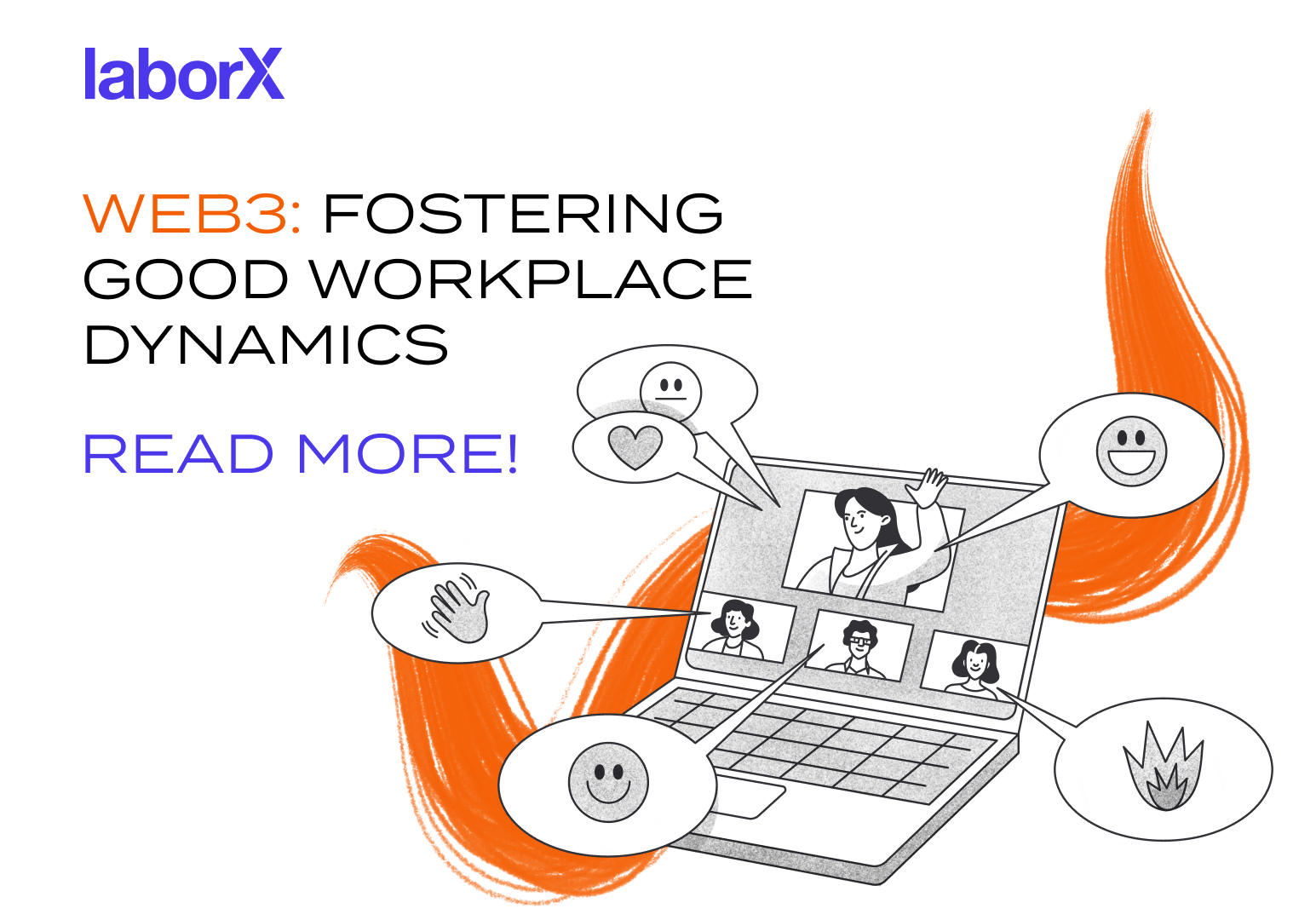
Embracing Change: HR in the World of Digital Assets
Hotcoin’s HR shares her journey from traditional industries to the world of Web3 and crypto, highlighting key insights on thriving in this space.
Read
Web3’s unique ethos and circumstances mean project teams may need to rethink how they engage and build cohesion.
Every new technology changes the way we work. That has been the case since the dawn of civilisation, and is no less so today, in the era of high-speed internet and remote freelancing.
Patterns and practices long-established in the offline, TradFi and Web2 worlds don’t necessarily translate successfully to the Web3 industry. Accordingly, trying to port them across to new businesses and business models in the decentralised space will often fail. That’s true of work habits (for example, the norm of working in the same physical location) and also – almost inevitably – for workplace culture.
While there are specific challenges to running and participating in a Web3 business, these aren’t insurmountable. However, project teams and especially organisation leaders should be aware that they will need to be deliberate about the steps they take to build a healthy workplace culture, which will, in turn, contribute to creating a strong and successful business.
There are a number of reasons why it’s critically important to cultivate a positive and healthy organisational culture, beyond simply the intangible outcome of having a pleasant place to work. These include:
All of this contributes to better team and community cohesion, setting your company apart in the marketplace and helping to attract customers/users who appreciate those values. While it may be hard to see the financial advantages of that, especially in the short term, it’s likely to translate into a meaningful competitive edge over time. The Web3 world is one in which organisations, founders and teams routinely cut corners and seek short-term gains, failing to take the long view. That kind of behaviour very often comes to light, despite efforts to keep it secret, and can be devastating to a business.
Put simply, fostering a strong workplace culture helps attract, shape, and keep good employees. And an engaged and motivated team is more likely to drive your business forward on an ethical and sustainable basis, contributing to its ultimate success.
Workplace culture is key to success. But how do you build that in a sector that depends on working practices that are seemingly antithetical to building team cohesion?
Just some of the challenges you’ll face as a Web3 organisation trying to form a tight, strong team, include:
Web3 brings together all kinds of people: Old, young, right and left leaning, all religions and none. Expect different opinions on all kinds of things, some of which you may find offensive (Covid and politics being two obvious and common sources of contention). You may need to learn to avoid certain topics of conversation, and you may find certain people hard to work with.
However, don’t assume that someone you struggle with is being annoying and offensive (though there will always be a few of those in any large enough group of people). Certain cultures are more direct in the way they speak, or more deferential, which can lead to clashes. If English is their second language, this further complicates things. Don’t assume the worst about someone on the first ‘bad’ interaction. Build up a picture of them over time.
On the positive side, it helps that Web3 is a work-hard, play-hard culture. Generally people know this, and recognise that they’re working together for the same ends – and that the benefits of pulling together can be considerable.
How then, can you go about deliberately building a strong workplace culture, given the challenges inherent in Web3’s employment practices?
Creating the right workplace dynamic is largely about active communication within your team and organisation. It’s vital to communicate the right ethos from the top down, and facilitate good ‘horizontal’ communication too.
This is built on a culture of being able to chat freely among the team. In the TradFi world, this would take place in the office, in communal areas (canteens, water coolers), and at after-work meet-ups. In Web3, it has to take place online.
Start with allowing and encouraging chatting about non-work matters in Discord or Slack, both within the team and with the community. This is something that will come from the leadership, first and foremost – if employees see founders taking time out to chat here and there, they will too.
Doing this is important for at least two reasons. Firstly, it helps your employees forge the kind of friendships and good work relationships that will underpin other interactions and ensure that people feel their fellow team members have their back. Secondly, this is also how vital information often changes hands, or the conditions for those valuable conversations are established.
Of course, if someone appears to be spending all their time posting memes, then it might be appropriate to tell them to get back to their paid work. Overall, though, don’t underestimate the importance of fun, casual interactions, because they’re so often the foundation for truly valuable conversations that do not and cannot happen elsewhere.
So much for the everyday, ad hoc interactions. You can also be more deliberate and organised about this through planned meetings of various kinds:
Whether it’s an All-hands or small group meeting, take time to give a shout-out for any milestones for your product, and any particularly impressive achievements from your team members, whether corporate and personal. Mention individuals for great work, and collective wins. Aim to instill a sense of pride for the organisation as a whole, and in those who have worked hard to make it a success. This shouldn’t feel artificial, but it’s important that your employees are recognised publicly when they do a good job.
If a team is motivated and professional, things should just work well. The best teams are ones where people feel valued as equals, and just get on with whatever needs to be done with minimal guidance. This is often the way that Web3 projects form, with groups of friends and close acquaintances trying out new ideas – often out of fun and curiosity.
However, if the project is a success, you’ll rapidly outgrow this stage. For example, you’ll need to take on new employees or freelancers. There’s always a risk to working with new people, and it’s unavoidable.
Ideally, it will be clear what kind of organisation you run from the outset. This should be part of your employer branding and reputation in the Web3 space. One way or another, though, make it clear what the expectations are for your employees – whether that’s in terms of working hours, office culture, code of conduct, or anything else. People will have come from all kinds of different backgrounds in Web2 and Web3, and you can’t assume they’ll share the same values as your core team from the outset. You can do this with a simple written document that you circulate internally, and distribute as part of the on-boarding process. As importantly, make sure that your core team members model the behaviour you want to see displayed throughout your organisation.
Web3 has very different workplace dynamics and settings to traditional 9-to-5 office life. Remote teams, disparate time zones, and language and cultural barriers can pose various barriers to building team cohesion.
What makes it easier is that Web3 is an industry that attracts self-starters who don’t like to play by the rules. It’s often characterised by extreme informality and a sense of camaraderie. Most employees don’t want to replicate conventional work norms and structures, are happy taking on a high degree of responsibility, and don’t need their hands held to make sure they do their jobs. Yes, there may be challenges, but the same factors that give rise to them are also the ones that make working in the blockchain sector so fun.

Hotcoin’s HR shares her journey from traditional industries to the world of Web3 and crypto, highlighting key insights on thriving in this space.
Read
Discover how Web3 is reshaping HR practices with insights from a leading expert in the field.
Read
Discover Base's innovative L2 solution addressing scalability, security, and user experience challenges in crypto. Learn about Base Incubator by LaborX, fostering growth and innovation within the Base ecosystem.
Read